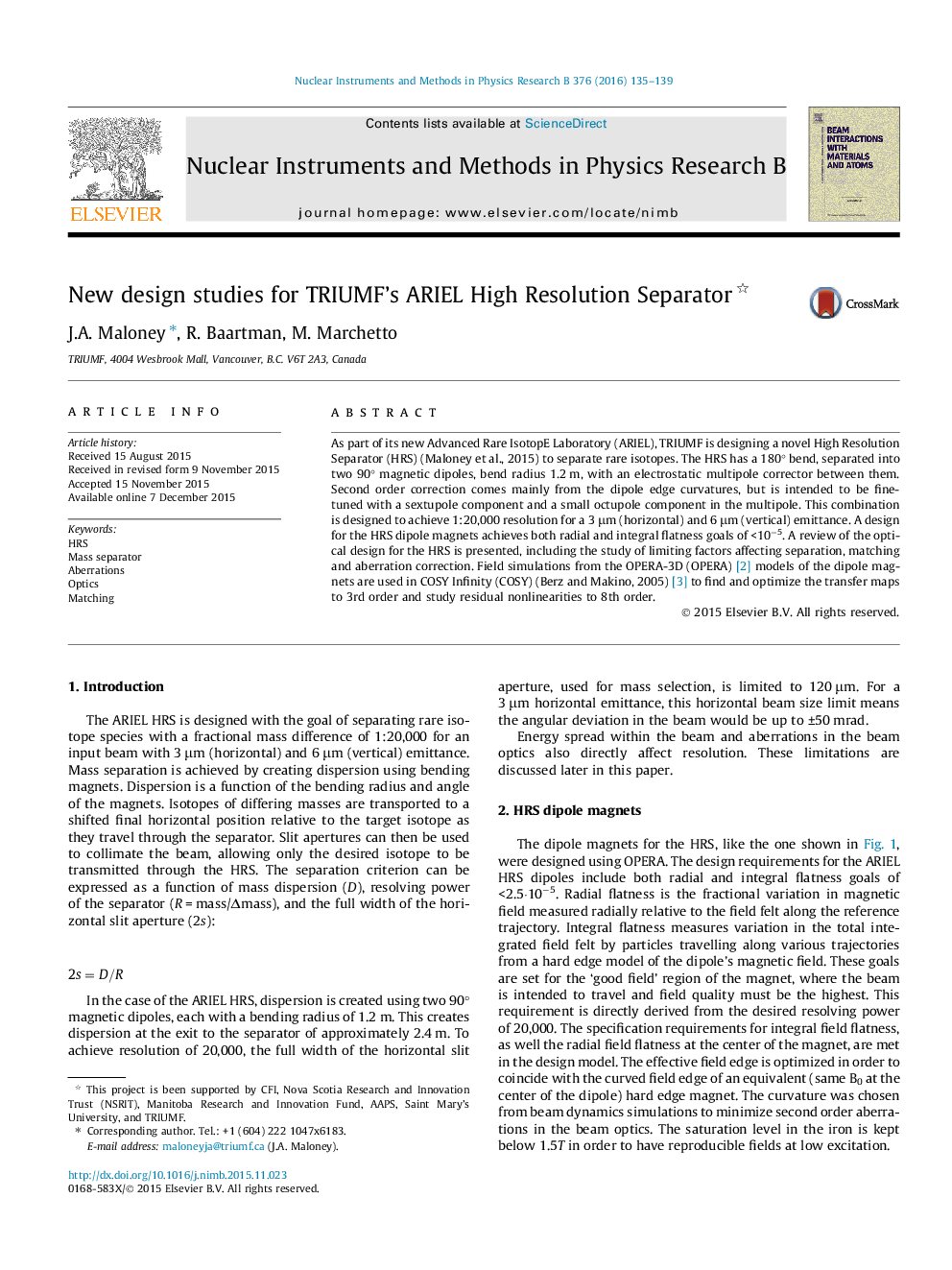| Article ID | Journal | Published Year | Pages | File Type |
|---|---|---|---|---|
| 8039756 | Nuclear Instruments and Methods in Physics Research Section B: Beam Interactions with Materials and Atoms | 2016 | 5 Pages |
Abstract
As part of its new Advanced Rare IsotopE Laboratory (ARIEL), TRIUMF is designing a novel High Resolution Separator (HRS) (Maloney et al., 2015) to separate rare isotopes. The HRS has a 180° bend, separated into two 90° magnetic dipoles, bend radius 1.2 m, with an electrostatic multipole corrector between them. Second order correction comes mainly from the dipole edge curvatures, but is intended to be fine-tuned with a sextupole component and a small octupole component in the multipole. This combination is designed to achieve 1:20,000 resolution for a 3 μm (horizontal) and 6 μm (vertical) emittance. A design for the HRS dipole magnets achieves both radial and integral flatness goals of <10â5. A review of the optical design for the HRS is presented, including the study of limiting factors affecting separation, matching and aberration correction. Field simulations from the OPERA-3D (OPERA) [2] models of the dipole magnets are used in COSY Infinity (COSY) (Berz and Makino, 2005) [3] to find and optimize the transfer maps to 3rd order and study residual nonlinearities to 8th order.
Related Topics
Physical Sciences and Engineering
Materials Science
Surfaces, Coatings and Films
Authors
J.A. Maloney, R. Baartman, M. Marchetto,
